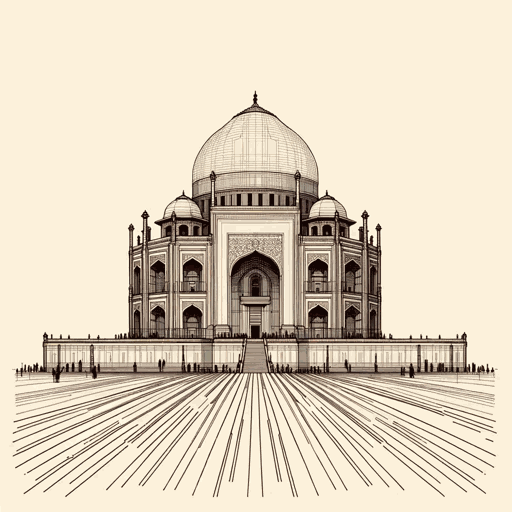71 pages • 2 hours read
Mahatma GandhiThe Story of My Experiments with Truth
Nonfiction | Autobiography / Memoir | Adult | Published in 1927A modern alternative to SparkNotes and CliffsNotes, SuperSummary offers high-quality Study Guides with detailed chapter summaries and analysis of major themes, characters, and more.
Summary and Study Guide
Overview
The Story of My Experiments with Truth is the autobiography of Mohandas Karamchand Gandhi, more widely known as Mahatma Gandhi. A key political and spiritual leader of India and the Indian independence movement, Gandhi penned this work to narrate his quest for truth and the principles that underpinned his life’s journey. Originally published in 1927, this memoir provides a meticulous account of Gandhi’s spiritual, moral, and political evolution. The literary era in which this was written saw a rise in anticolonial literature and views challenging imperialist doctrines, and while Gandhi’s autobiography fits this mold, its ubiquitous spiritual introspection sets it apart. The book’s key thematic elements include the importance of truth in Gandhi’s life, the philosophy of nonviolence, and the interplay of spirituality and politics.
This guide refers to the 2020 Sanage Publishing Kindle Edition.
Content Warning: Readers are advised to approach the book with sensitivity to its historical context, recognizing that it contains descriptions of racial and social inequalities pertinent to its era. Some language and depictions might be considered dated or even problematic by contemporary standards.
Summary
The Story of My Experiments with Truth chronicles the life journey of Mahatma Gandhi, beginning with his early days in Porbandar, India, progressing through his formative years in England and South Africa, and culminating in his major role in India’s gaining independence from British rule. The autobiography delves into Gandhi’s pursuit of understanding truth (a quest that often brought him into conflict with societal norms), his personal dietary and lifestyle challenges, and even his disagreements with contemporaries. While highlighting Gandhi’s evolution from a lawyer to a central figure in nonviolent resistance, the text also delves into various aspects of his personal life. Gandhi’s choices, such as opting for celibacy, undertaking dietary experiments to comprehend purity, and leading a minimalist lifestyle, were not isolated decisions; they reflected his overarching philosophical convictions and informed his political action.
The text begins with a brief introduction that describes how Gandhi was delayed in penning his autobiography and what inspired him to write it. The main part of the book opens with Gandhi’s formative years in Porbandar. He reflects on his adolescent challenges, his early marriage to Kasturbai Gokuldas Kapadia, and his time in England attending law school. In England, he grappled with cultural adaptations, made significant vows regarding his lifestyle, and began exploring various religions and philosophies. The story then shifts to his years in South Africa. While working as a lawyer there, he directly confronted racial prejudice. Here, amid the pressing civil rights issues, the seeds of satyagraha, or nonviolent resistance, were sown in him. In addition, this period reflected Gandhi’s deepening spiritual quests, and he experimented with celibacy, simple living, and a diet that would sustain his health and his principles.
Returning to India, Gandhi became involved in the Indian National Movement. His commitment to nonviolence was tested in Champaran, where he stood with peasants against oppressive plantation systems. The intensity of the struggle galvanized Gandhi’s position, pushing him further into the epicenter of India’s fight for freedom. His commitment to various causes, such as promoting sanitation, improving education, and uplifting the harijans, or members of India’s outcaste group, further solidified his status as a social leader. Gandhi’s involvement in various political and social challenges continued to intensify. He relocated his ashram for safety during a plague, stood with workers during the Ahmedabad mill dispute, and became a beacon of hope during the Kheda crisis, in which farmers faced near-famine conditions. Throughout each of these events, his actions reflected the nonviolence principles of satyagraha.
Gandhi’s leadership in the Indian National Movement strengthened. He navigated the complexities of the Khilafat movement (a campaign by Muslim people in India opposing certain British policies concerning Eastern Europe), demonstrating his commitment to Hindu-Muslim unity. Despite health challenges and personal struggles, he remained focus, particularly when confronting oppressive legislations like the Rowlatt Act. The initiation of the non-cooperation movement and the national hartal (strike) became emblematic of a nation’s collective resistance against colonial rule. However, the Jallianwala Bagh massacre demonstrated the British regime’s brutality, and Gandhi’s commitment to civil resistance faced significant tests. He acknowledged his misjudgments, particularly in prematurely rallying the masses for civil disobedience without ensuring their true understanding of the movement’s essence. Despite the challenges, Gandhi’s involvement with publications like Young India and Navajivan provided a voice and connection to the Indian masses.
The concluding chapters underscore Gandhi’s evolving strategies in the freedom movement. Discussions on the Khilafat movement, the significance of cow protection, the intricacies within the Indian National Congress, and the emphasis on swaraj (self-rule) became central. The khadi movement, advocating for swadeshi, emerged as a potent symbol of self-reliance, economic empowerment, and resistance against British economic dominance. The memoir concludes with Gandhi reflecting on his relentless pursuit of truth, emphasizing the sanctity of his experiments with truth and nonviolence, as well as the fusion of religion and politics in his life’s journey. The autobiography was published in 1927 and was not updated to cover the significant events of the 1930s and 1940s, including India’s major civil disobedience movements against British rule, Gandhi’s negotiations for India’s independence, and the subsequent partition of India and Pakistan. The memoir ends some 20 years before India achieved its independence from British rule in 1947 and Gandhi’s assassination in 1948.
Related Titles
By Mahatma Gandhi
Featured Collections
Asian History
View Collection
Books on Justice & Injustice
View Collection
Class
View Collection
Class
View Collection
Colonialism & Postcolonialism
View Collection
Contemporary Books on Social Justice
View Collection
Education
View Collection
Health & Medicine
View Collection
Indian Literature
View Collection
Memorial Day Reads
View Collection
Military Reads
View Collection
Philosophy, Logic, & Ethics
View Collection
Politics & Government
View Collection
Poverty & Homelessness
View Collection
Religion & Spirituality
View Collection
Truth & Lies
View Collection



